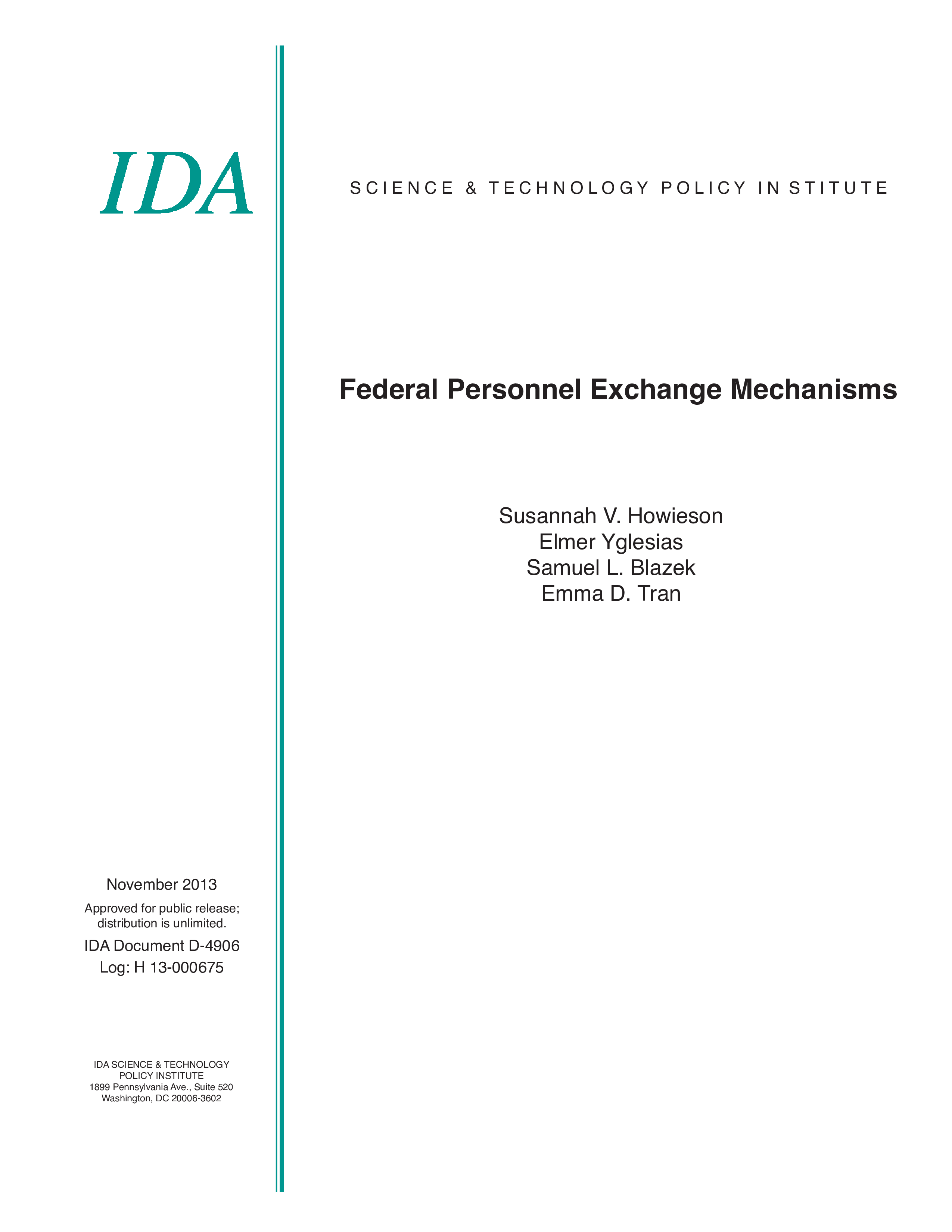The Federal Government science and technology enterprise is enhanced by the regular rotation of external technical talent into the government and vice versa. This project involved collecting literature, reviewing legal documents, and engaging various stakeholders in the personnel exchange system to explore the available mechanisms and identify potential improvements. Currently available personnel exchange mechanisms vary along several parameters, such as which agency can use which individuals (Federal, nonprofit, university, or for-profit employees) and which role the individuals can fill. The length and complexity of the personnel exchange process depends on the agency and the type of mechanism used. Personnel exchanges provide myriad benefits for the exchangee, destination organization, and home organization. Logistical and cultural barriers include challenges associated with initiating and implementing an exchange, resource constraints, cultural tension, and post-exchange transition difficulties. Legal and regulatory requirements intended to prevent financial conflicts can impede personnel exchanges. Policy options identified by stakeholders for improving current personnel exchange mechanisms include providing executive encouragement and support for personnel exchanges, streamlining agreement packages and processes and issue exchange procedure manuals, and establishing a government-wide central repository for listing opportunities and required paperwork.

